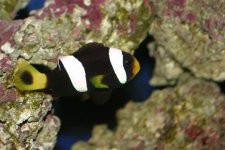dizzy":2o6mre3n said:Also coraline algae can grow in freshwater. A lot of the FW tanks at the Shedd have coraline algae which grows well in the Lake Michigan water.
Mitch, the red algae in the freshwater system at the Shedd Aquarium is not coralline. AFAIK, there are no freshwater coralline Rhodophyta.






